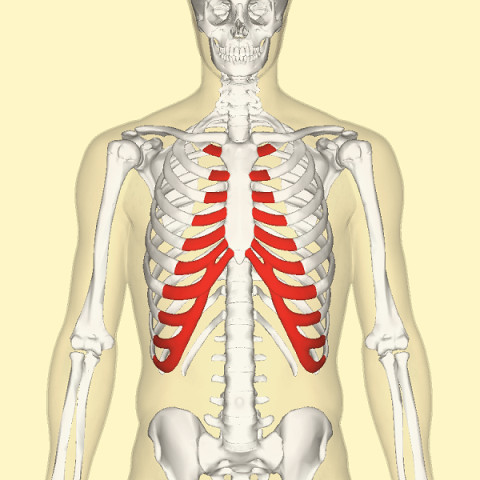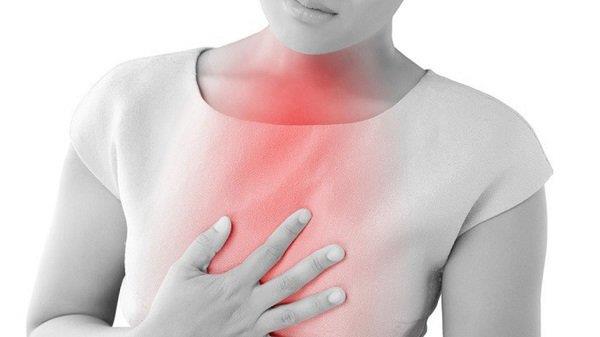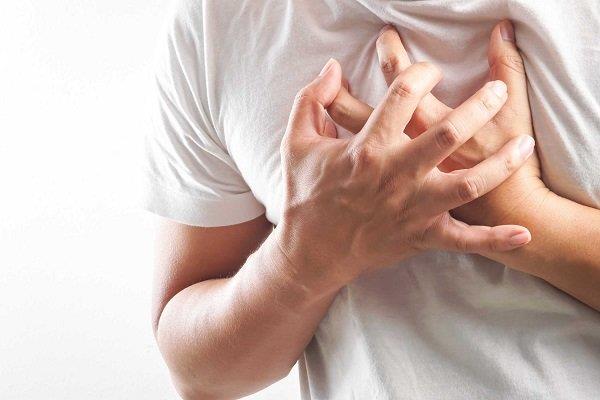Costochondritis: Causes, symptoms and treatment

Costochondritis is a condition that causes chest wall pain. It is caused by inflammation of the costal cartilage – the joint between the ribs and the sternum. This is not a life-threatening disease. However, symptoms can affect your work and quality of life. It is very important to have basic knowledge about the causes, symptoms, and treatment of costochondritis. So, let's find out with SignsSymptomsList in the following article!
content
- 1. Structure of the rib cage (chest)
- 2. What is costochondritis?
- 3. What are the symptoms of costochondritis?
- 4. What is the cause of costochondritis?
- 5. Who is susceptible to costochondritis?
- 6. What are the emergency symptoms of costochondritis?
- 7. How is costochondritis diagnosed?
- 8. How is costochondritis treated?
- 9. Lifestyle changes
- 10. What complications can costochondritis cause?
- 11. How long does costochondritis heal?
1. Structure of the rib cage (chest)
Before learning about costochondritis, let's learn about the basic structure of the ribcage. The rib cage is a fairly stable structure, to protect the internal organs. For example: heart, lungs, blood vessels... When a person breathes, the chest cavity also expands to support breathing.

Illustration of the costal cartilages of the rib cage (red)
There are 12 pairs of ribs. The ribs attach to the spine in the back and the sternum in the front. The ribs are attached to the sternum by the costal cartilages. Ribs 1-7 each have their own costal cartilage to attach to the sternum. Ribs 8, 9, 10 are attached indirectly through rib cartilage No. 7. Two ribs 11, 12 do not have rib cartilage but are suspended. That's why they're called coccyx.
2. What is costochondritis?
Costochondritis is an inflammation of the costal cartilages of the ribs. Chest pain caused by costochondritis can range from mild to severe. Mild cases of pain may be just chest pain to the touch. Or a few cases of pain when you push into the cartilage area.
Severe cases can cause sharp pain that radiates down the arm or into unbearable pain. And these pains don't seem to go away. This condition usually lasts for a few weeks. But some cases may require treatment.
3. What are the symptoms of costochondritis?

Chest pain is the most prominent and common symptom
Chest wall pain is the most prominent and common symptom . If you have costochondritis, you usually have pain in the upper and middle ribs, either side of the breastbone. The pain may radiate to the back or down the abdomen. Pain increases when you move, stretch, or take a deep breath.
Chest pain symptoms can have many other causes. One of the dangerous causes is myocardial infarction or other cardiovascular diseases. Therefore, you should get medical help right away if you feel you have chest pain.
4. What is the cause of costochondritis?
The exact cause of costochondritis is mostly unknown. But some conditions that may be involved are:
- Trauma to the chest wall, such as a car accident or a fall…
- Physical stress. Examples include lifting heavy objects, strenuous exercises, severe, persistent cough.
- Respiratory conditions or certain viral, bacterial, or fungal infections. For example, tuberculosis and syphilis can all cause arthritis.
- Arthritis: Rheumatoid Arthritis, Osteoarthritis
- Tumors: Noncancerous or cancerous tumors can cause costochondritis. Cancer can metastasize from other organs. For example, breast cancer, thyroid cancer, lung cancer, etc.
5. Who is susceptible to costochondritis?
Costochondritis is more common in women and people over the age of 40. You may also be more likely to develop costochondritis if you have one of the following conditions:
- Participate in high intensity activities
- Performing manual labor
- Allergic and frequently exposed to allergens
- Rheumatoid arthritis
- Reactive arthritis

Improper lifting of heavy objects by hand can put pressure on the chest wall muscles
Improper lifting of heavy objects by hand can put pressure on the chest wall muscles. So, lift heavy objects or backpacks properly. Persons performing manual labor should work with caution.
6. What are the emergency symptoms of costochondritis?
You need to see your doctor right away if you feel short of breath or have severe chest pain.
Always seek emergency medical attention if you have unusual chest pain. This condition could indicate a serious medical condition, such as a heart attack. Getting medical care as soon as possible will limit complications. Especially the hidden injection problem that is causing your costochondritis.
7. How is costochondritis diagnosed?
First, your doctor will ask you some questions about your illness. Eg:
- What symptoms have you been experiencing?
- When do these symptoms appear?
- What level of pain are you experiencing?
- What movements make the pain worse?
- Have you taken any medication or treatment?
- Are you currently sick or taking any medication?
- Your family history of cardiovascular disease
- Have you had a recent chest injury?
Your doctor will also examine you. Your doctor will assess pain by pressing on your ribs. Observing how you react will help gauge the level of pain. They may also look for signs of infection or associated inflammation.
Your doctor may order some necessary tests. For example, chest X-ray, blood test. The goal is to rule out other possible causes of chest pain. You may need an electrocardiogram, cardiac enzyme test, echocardiogram, etc. to make sure you don't have problems with your heart or coronary arteries.
8. How is costochondritis treated?
There are a few ways to treat costochondritis. Treatment of costochondritis usually focuses on pain relief.
8.1. Medicine

Most cases of costochondritis are treated with over-the-counter medications
Most cases of costochondritis are treated with over-the-counter medications. If the pain is mild to moderate, your doctor will recommend nonsteroidal anti-inflammatory drugs (NSAIDs), such as ibuprofen or naproxen.
Your doctor may also prescribe certain medications:
- Strong NSAIDs require a prescription
- Other narcotic pain relievers. This drug is usually prescribed in cases of severe pain.
- Antidepressants. Tricyclic antidepressants, such as amitriptyline, are commonly used for chronic pain. Especially if the pain keeps you awake.
- Oral steroids or steroid injections into the area involved
8.2. Physiotherapists
Physical therapy treatment may include:
- Stretching exercises. General stretching exercises for the chest muscles may be beneficial.
- Nerve stimulation. Possibly a transcutaneous electrical nerve stimulation (TENS) procedure. An instrument that sends a weak electrical current through a patch to the skin, near the site of pain. Electric currents can interrupt or mask pain signals. This prevents them from being transmitted to the brain.

General stretching exercises for the pectoral muscles may be beneficial
9. Lifestyle changes
Your doctor may also recommend lifestyle changes if you have chronic or persistent costochondritis. Certain activities can be aggravated, such as running, lifting weights, etc. Manual labor can also have negative effects.
Your doctor also recommends that you:
- Rested
- Apply ice or heat. Ice is often used during the first few days of pain. Cover the ice with a damp towel. Apply to painful skin. Apply ice about 3 times / day, about 20 minutes each time. Note, do not apply ice directly to the skin. As this can cause frostbite to the skin.
10. What complications can costochondritis cause?

If you have chest pain, you need to contact your doctor immediately for examination and treatment
If you have chronic costochondritis, the pain may return, even after you have had treatment. In these cases, you may need long-term medical care to make sure it doesn't affect your quality of life. At the same time, participation in your daily or psychological activities should also be ensured.
Chest pain associated with costochondritis is a common symptom of fibromyalgia. With fibromyalgia, you may experience pain in your chest, along with:
- Pain all over your body
- Tired and unable to rest due to pain
- Difficulty to concentrate
- Feeling depressed
- Headache
If you have chest pain that is accompanied by these symptoms, tell your doctor. Your doctor will check to see if you have fibromyalgia.
11. How long does costochondritis heal?
The healing time depends on the extent of the injury and the location of each person. There is no such thing as a constant amount of time.
In many cases, costochondritis resolves on its own. In mild cases of pain, costochondritis may clear up on its own after a few days. Chronic cases can last several weeks or more. But most cases are no more than a year. Note, these time numbers are for reference only.
If you have any questions, consult your doctor for the best treatment support.
In summary, the symptom of chest pain caused by costochondritis is a symptom that cannot be ignored. Get medical attention right away if you feel chest pain. Especially in the elderly, with underlying cardiovascular disease... With a mild degree, costochondritis can go away on its own without any treatment. Hopefully the article provides useful information about the causes, symptoms, and treatment of costochondritis. Do not hesitate to leave questions in the comments section, as well as share the article if you find it useful. Looking forward to receiving your feedback as well as accompanying you in the next articles. SignsSymptomsList is always ready to support you!
Doctor Nguyen Thanh Xuan